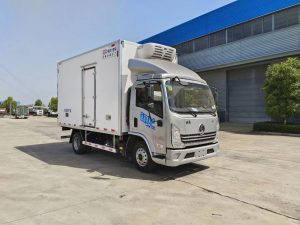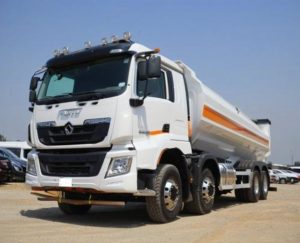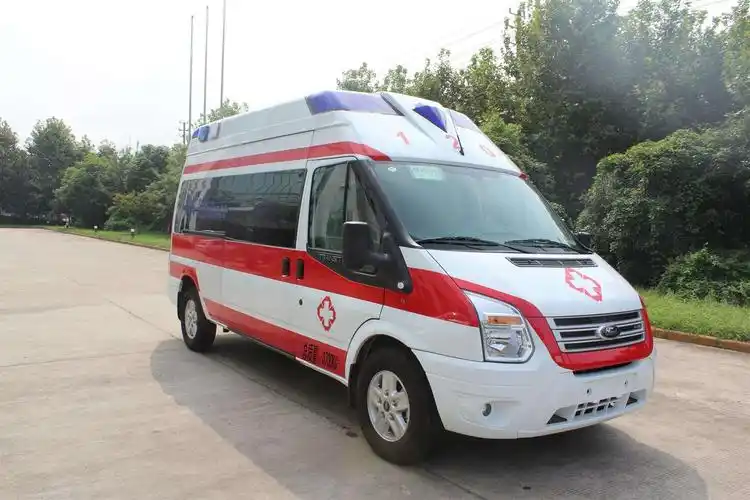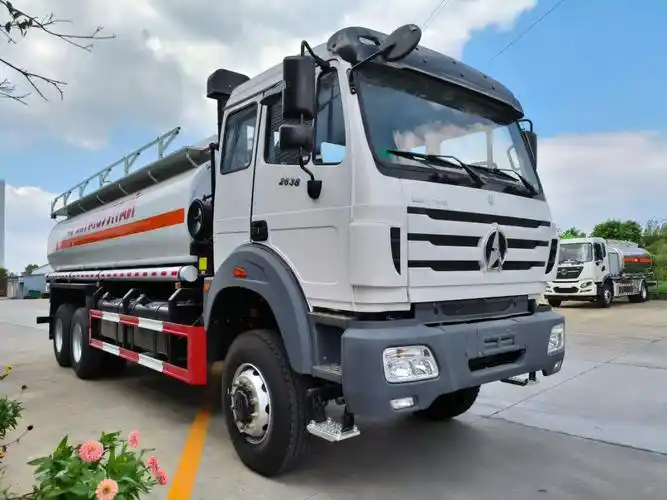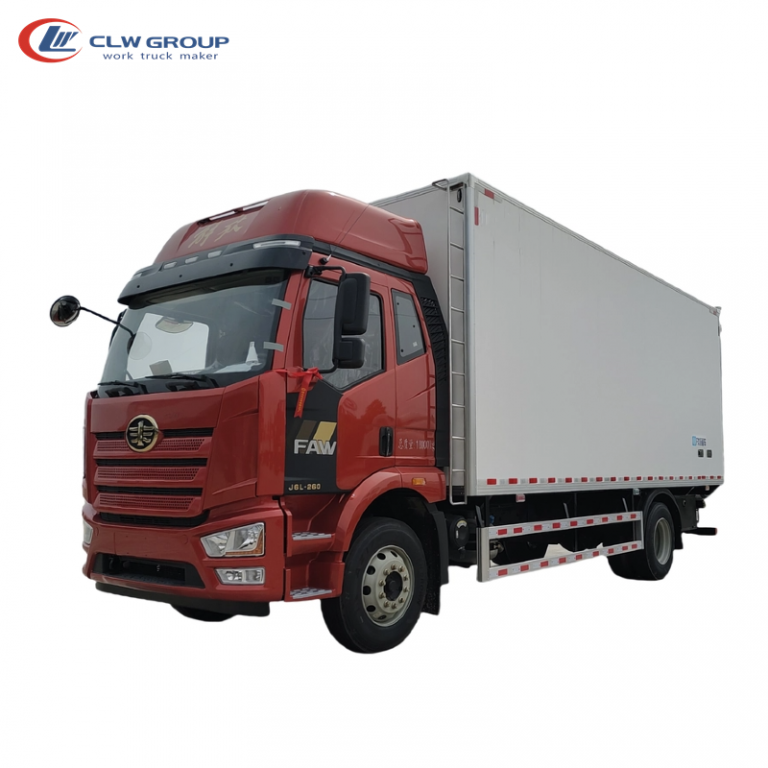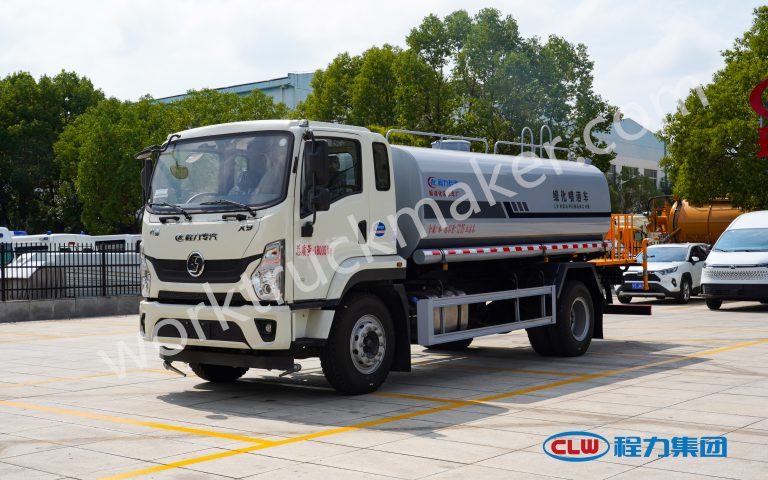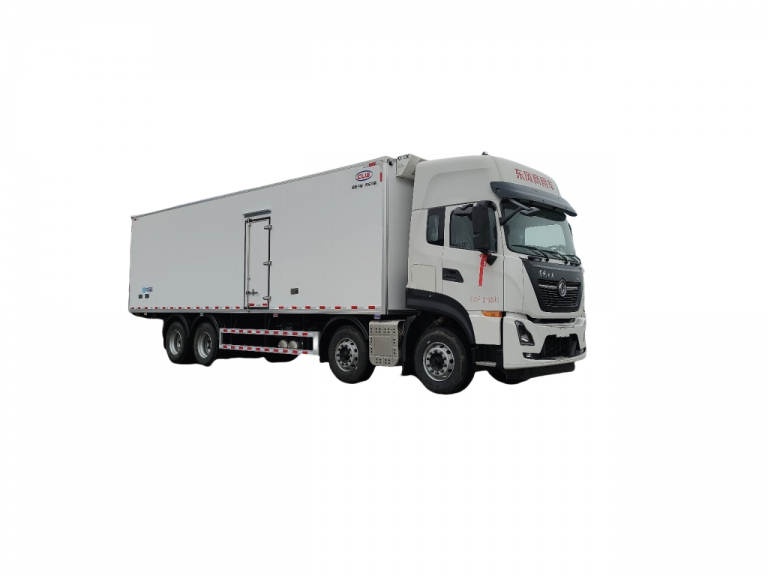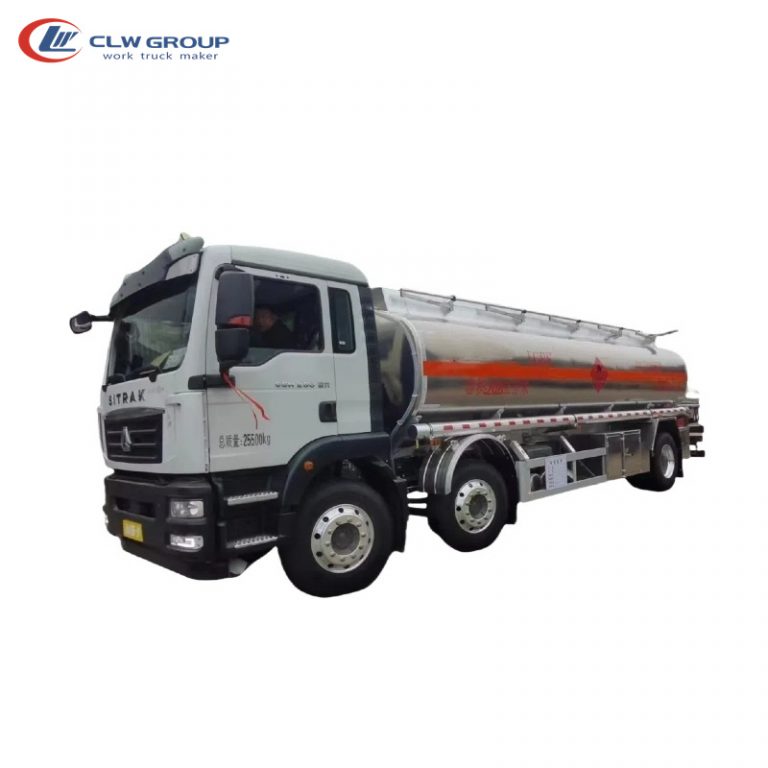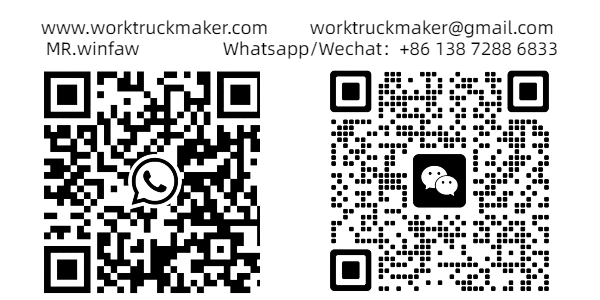Table of Contents
Toggle
In today’s fast-paced business world, efficient transportation plays a crucial role in the success of any company. The logistics truck has emerged as a game-changer, offering numerous benefits to businesses of all sizes. These versatile vehicles have revolutionized the way companies move goods, manage inventory, and serve their customers.
Using a logistics truck can transform your business operations in multiple ways. It provides a cost-effective solution for transporting goods, enhances delivery speed and reliability, and offers flexibility in handling various load sizes and types. Moreover, it helps improve inventory management, expands market reach, and gives better control over the supply chain. This article will explore the top 10 advantages of incorporating a logistics truck into your business strategy, highlighting how it can boost your efficiency and customer satisfaction.
Cost-Effective Transportation Solution
Logistics trucks offer businesses a highly efficient and economical means of transporting goods. By leveraging these vehicles, companies can optimize their logistics and distribution processes, leading to substantial cost savings. This solution addresses several key areas that contribute to overall cost-effectiveness in transportation.
Reduced Shipping Costs
One of the primary advantages of using logistics trucks is the significant reduction in shipping expenses. This is particularly evident when comparing the cost-efficiency of different transportation modes. For instance, while air freight might be faster, sea freight is generally much more economical. However, logistics trucks strike a balance between speed and cost, making them an attractive option for many businesses.
To illustrate the cost-effectiveness of logistics trucks, consider the following comparison:
| Transportation Mode | Cost | Speed | Suitability |
|---|---|---|---|
| Air Freight | High | Fast | Time-sensitive, low-volume goods |
| Sea Freight | Low | Slow | Large volumes, non-urgent goods |
| Logistics Trucks | Medium | Moderate | Balanced option for most goods |
Furthermore, businesses can employ strategies to further decrease logistical expenses when using trucks. These may include revising shipping networks, improving processes, and enhancing relationships with suppliers and third parties.
Economies of Scale
Logistics trucks enable businesses to benefit from economies of scale, which has a direct impact on cost-effectiveness. This concept is particularly evident in Less-than-Truckload (LTL) and Full Truckload (FTL) shipping options.
In LTL shipping, contrary to what one might expect, heavier items often cost less to ship per hundred pounds than lighter ones. This means that larger loads typically offer better value for money. For instance, shipping two pallets every two days is more expensive than sending six pallets at once.
To take advantage of this, businesses can:
- Consolidate smaller shipments into larger ones
- Combine shipments from multiple suppliers
- Merge freight with other nearby companies going to the same destinations
- Encourage customers to make larger, less frequent orders
By implementing these strategies, companies can significantly reduce their overall shipping costs while maintaining efficient delivery schedules.
Fuel Efficiency
Fuel efficiency is a crucial factor in the cost-effectiveness of logistics trucks. Modern trucks are designed to maximize fuel economy, which translates directly into cost savings for businesses. The concept of Freight Ton Efficiency (FTE) is particularly relevant here.
FTE is calculated by multiplying the mass of goods being moved (in US tons) by the truck’s fuel economy (in US mpg) to create a ton-miles per gallon metric. A higher FTE measurement indicates better efficiency and lower CO2 emissions.
To improve fuel efficiency and reduce costs, businesses can:
- Maximize loading to improve FTE
- Maintain a constant speed (ideally around 55 mph)
- Use cruise control to ensure consistent fuel consumption
- Choose the most efficient routes
- Invest in aerodynamic add-ons like tractor side fairings and trailer skirts
It’s worth noting that while the average semi-truck gets about 6.5 to 7.5 miles per gallon (MPG), compared to 25 MPG for an average passenger vehicle, this difference is largely due to the weight being transported. When considering the amount of cargo moved, logistics trucks prove to be highly efficient.
By focusing on these aspects of cost-effectiveness, businesses can significantly reduce their transportation expenses while maintaining efficient and reliable delivery services. The use of logistics trucks, when optimized for reduced shipping costs, economies of scale, and fuel efficiency, offers a compelling solution for businesses looking to streamline their transportation operations and improve their bottom line.
Enhanced Delivery Speed and Reliability
Logistics trucks have become a cornerstone in modern business operations, offering significant advantages in terms of delivery speed and reliability. These benefits stem from various factors that contribute to the efficiency and effectiveness of logistics transportation.
Faster Transit Times
One of the primary advantages of using logistics trucks is the substantial reduction in transit times. This improvement in speed has a direct impact on business operations and customer satisfaction. For instance, a typical truck journey from New York City to Los Angeles might take about 5 days. However, with expedited shipping options, this transit time can be cut by approximately half.
Several factors contribute to these faster transit times:
- Use of smaller vehicles with higher average MPH times
- Implementation of team drivers
- Advanced tracking technology
Team drivers play a crucial role in expediting deliveries. By utilizing pairs of drivers, trucks can be driven continuously to their destination with only brief stops for refueling. This approach allows for more total drive time while still adhering to legal driving hour regulations.
Direct Point-to-Point Delivery
Point-to-point logistics has emerged as an efficient method to enhance delivery speed and reliability. This approach involves transferring shipments directly from origin to destination without any interruptions during the journey. It’s also known as a ‘direct connection’ and is particularly effective for high-traffic routes.
The benefits of point-to-point delivery include:
- Minimized handling and transfers
- Reduced risk of delays or errors
- Increased predictability of arrival times
For businesses requiring swift deliveries, point-to-point services can be a game-changer. Companies like Roadie have implemented systems similar to ride-sharing apps, connecting businesses with drivers already heading in the right direction. This approach enables same-day deliveries for distances under 100 miles, significantly reducing transit times.
Reduced Handling and Transfers
Minimizing the number of times a shipment is handled or transferred is crucial for maintaining both speed and reliability in logistics. Each additional handling point introduces potential delays and increases the risk of errors or damage.
Logistics trucks excel in this aspect by offering:
- Direct routes from origin to destination
- Fewer intermediary stops or transfers
- Reduced risk of mishandling or misplacement
This reduction in handling and transfers not only speeds up the delivery process but also enhances the overall reliability of the shipment. It ensures that goods arrive at their destination in the same condition they left the origin point, which is particularly crucial for sensitive or high-value items.
The reliability of logistics transportation has a profound impact on various aspects of business operations:
| Aspect | Impact of Reliable Transportation |
|---|---|
| Customer Satisfaction | Increased due to punctual and steady deliveries |
| Supply Chain Efficiency | Improved planning and resource utilization |
| Inventory Management | Reduced need for excess stock, leading to cost savings |
| Supplier Relationships | Strengthened through consistent and timely deliveries |
| Global Trade | Facilitated by efficient customs clearance and cross-border shipments |
By leveraging these advantages, businesses can significantly enhance their logistics operations, leading to improved customer satisfaction, operational efficiency, and overall competitiveness in the market.
Flexibility in Load Sizes and Types
Accommodating Various Cargo Types
Logistics trucks offer remarkable versatility in handling a wide range of cargo types. This flexibility stems from the diverse array of trailer options available to businesses. Flatbed trucks, for instance, have become a cornerstone in the trucking industry due to their adaptability. These open-bed vehicles allow for easy loading and unloading of oversized or irregularly shaped items from the top, sides, and rear. This makes them ideal for transporting construction materials, heavy machinery, steel pipes, and lumber.
For even taller or longer freight, step deck trailers (also known as drop decks) provide an excellent solution. These trailers feature a two-level design with a lower deck, enabling the transportation of cargo that exceeds standard height restrictions. Similarly, Removable Gooseneck (RGN) trailers offer unparalleled flexibility for exceptionally tall or long items, with some capable of carrying loads up to 150,000 pounds.
Adjustable Capacity
The ability to adjust capacity is a key advantage of logistics trucks. Many trailers come equipped with features that allow for customizable cargo arrangements. For example, some trucks utilize trailers with adjustable decks or partitions, enabling businesses to optimize space usage based on the specific needs of each shipment.
This adaptability extends to specialized trailer types as well. Refrigerated trailers, or reefers, provide temperature-controlled environments for perishable goods. These units can maintain precise temperatures regardless of external conditions, making them invaluable for transporting food products and pharmaceuticals.
For businesses dealing with liquid cargo, tanker trucks offer a secure solution. These vehicles feature sealed, pressurized compartments designed to minimize leaks and spills during transit. The tanks are often constructed from corrosion-resistant materials like aluminum or stainless steel to preserve the purity of the transported liquids.
Special Equipment Options
To further enhance flexibility, logistics trucks can be equipped with various specialized tools and features. One such option is the liftgate, a hydraulic platform attached to the rear of the trailer. This addition significantly simplifies the loading and unloading process for heavy or bulky items, particularly beneficial for expedited freight or spot truckload shipments requiring rapid turnaround.
For flatbed loads, coil racks serve as an essential accessory. These devices secure steel coils to the trailer, preventing shifting during transport and protecting both the cargo and the trailer from potential damage. Additionally, tarps and straps are commonly used to cover and secure flatbed loads, shielding them from the elements.
Curtain side trailers offer another innovative solution, featuring a tarp system that opens like curtains on both sides of the trailer. This design allows for easy access and quick loading and unloading, making it particularly useful for goods requiring frequent handling.
To illustrate the range of specialized equipment available, consider the following table:
| Trailer Type | Special Equipment | Primary Use |
|---|---|---|
| Dry Van | Liftgate | Easy loading/unloading of heavy items |
| Flatbed | Coil racks, tarps | Securing and protecting open loads |
| Refrigerated | Temperature recorders | Monitoring cargo temperature |
| Conestoga | Rolling tarp system | Protecting oversized/irregular cargo |
| Curtain Side | Load restraint system | Securing easily accessible loads |
By investing in the right equipment and technology, businesses can significantly impact their truck load capacity and overall logistics efficiency. This flexibility in load sizes and types allows companies to adapt to varying transportation needs, ultimately leading to improved operational efficiency and customer satisfaction.
Improved Inventory Management
The use of logistics trucks has a significant impact on inventory management, enabling businesses to streamline their operations and reduce costs. This improvement stems from several key factors that contribute to more efficient inventory control and distribution.
Just-in-Time Delivery
Just-in-Time (JIT) delivery, also known as lean manufacturing, is an inventory management strategy that involves ordering and receiving inventory for production and sales on an as-needed basis. This approach minimizes inventory requirements, limits roadblocks in the supply chain, and cuts unnecessary costs. By implementing JIT delivery, businesses can:
- Reduce waste
- Improve production efficiency
- Limit staffing needs
- Allow for short production runs
- Minimize warehousing costs
- Free up cash flow for other purposes
The JIT system is experiencing renewed interest as a reliable solution to keep the fulfillment supply chain in motion from the end of the production process through the last mile. It enables businesses to meet customer demand efficiently by creating goods in a ready state or completing their production with minimal inventory.
Real-Time Tracking
Real-time tracking has become an essential tool for improving inventory management in the logistics industry. With GPS tracking devices and advanced software, businesses can optimize delivery routes, plan deliveries in advance, and load delivery vehicles to full capacity. This technology offers several benefits:
- Transparency at every step of the journey
- Minimized risks of delays and disruptions
- Improved operational efficiency
- Reduced losses and upholding of brand promises
Real-time tracking allows companies to manage their inventory levels more effectively, reducing the need for excess stock and minimizing storage costs. It also enables businesses to identify bottlenecks or delays in the fulfillment process, allowing for timely corrective action.
Reduced Warehousing Needs
By implementing JIT delivery and real-time tracking, businesses can significantly reduce their warehousing needs. This reduction in storage requirements has several advantages:
- Lower inventory carrying costs
- Improved cash flow
- More efficient use of available space
- Reduced risk of obsolete inventory
Efficient distribution centers prioritize managing storage space to ensure that goods can be quickly located and retrieved when needed, then sent to the end user. This approach helps businesses maintain a lean inventory while still meeting customer demand.
To illustrate the impact of improved inventory management on warehousing needs, consider the following comparison:
| Aspect | Traditional Approach | Improved Inventory Management |
|---|---|---|
| Stock Levels | High safety stock | Minimal inventory |
| Warehousing Costs | High | Significantly reduced |
| Cash Flow | Tied up in inventory | More available for other uses |
| Response to Demand | Slower, less flexible | Faster, more adaptable |
| Risk of Obsolescence | Higher | Lower |
By leveraging logistics trucks in conjunction with these inventory management strategies, businesses can achieve a more streamlined and cost-effective supply chain. This approach not only reduces operational costs but also improves overall efficiency and customer satisfaction.
Expanded Market Reach
Logistics trucks play a crucial role in expanding market reach for businesses, offering solutions to challenges that often hinder growth and accessibility. This expansion is particularly evident in three key areas: access to remote areas, cross-border capabilities, and last-mile delivery.
Access to Remote Areas
Logistics trucks have become indispensable for industries operating in remote locations, such as the oil and gas sector and mining industry. These areas often present unique challenges, including:
- Limited infrastructure
- Unpaved highways with steep grades
- Isolated locations with limited mobile communication
- Extreme weather conditions
To overcome these obstacles, companies employ various strategies:
- Implementing strict control, planning, and analysis for transportation
- Utilizing specialized equipment for proper packing and harnessing of shipments
- Employing experienced and skilled drivers familiar with challenging routes
By leveraging reliable vendors and partners, businesses can obtain better visibility and control of shipping to remote sites. This approach, combined with careful planning and software implementation, enables companies to meet challenging logistics conditions and avoid additional costs.
Cross-Border Capabilities
Cross-border freight transport, particularly between the United States and Mexico, has become increasingly important as companies consider near-shoring or reshoring strategies. This type of transportation presents unique opportunities and challenges:
- Regulatory complexities: Both countries have laws restricting carrier operations within their borders.
- Customs clearance: Pre-clearance processes can significantly reduce delays at border checkpoints.
- Security concerns: Advanced surveillance equipment and trained specialists ensure secure crossings.
Intermodal transportation has emerged as an efficient solution for cross-border shipping. It offers several advantages:
- Unrestricted movement of intermodal containers via rail
- Streamlined customs procedures
- Cost-effectiveness due to larger volume capacity
- Reduced carbon emissions compared to road-based transport
Last-Mile Delivery
The rise of e-commerce has placed increasing demands on last-mile delivery services. This final stage of the logistics process presents unique challenges:
- High costs: Last-mile delivery accounts for approximately 50% of overall logistics costs across various industries.
- Time constraints: Consumers expect rapid delivery, often within one or two days.
- Diverse product sizes: Delivery of both small parcels and large, oddly shaped items like furniture.
To address these challenges, businesses are adopting innovative solutions:
- Utilizing a combination of light-duty, medium-duty, and heavy-duty trucks
- Implementing real-time tracking and delivery updates
- Leveraging technology-driven final mile logistics with multiple service tiers
- Establishing a network of multi-client hubs for nationwide coverage
By employing these strategies, companies can enhance their last-mile delivery capabilities, improve customer satisfaction, and protect their brand reputation in an increasingly competitive market.
Better Control Over Supply Chain
Logistics trucks play a crucial role in providing businesses with enhanced control over their supply chain. This control manifests in various ways, including direct oversight, customized schedules, and responsiveness to demand changes.
Direct Oversight
Asset-based carriers, also known as asset-based trucking companies, offer a significant advantage in supply chain management. These companies own their fleet of trucks and trailers and employ the drivers who operate them. This direct ownership and control allow for better oversight of the entire transportation process.
One of the key benefits of working with asset-based carriers is the streamlined communication they provide. Unlike third-party providers that may need to navigate multiple levels of communication, asset-based trucking companies offer direct access to information. This “from the horse’s mouth” approach enables businesses to make more informed decisions about their logistics operations.
Moreover, asset-based carriers have a deeper understanding of their drivers’ capabilities and training. This knowledge allows them to match drivers to specific customer requirements more effectively, ensuring that each shipment is handled by the most suitable personnel.
Customized Schedules
Real-time truck tracking has revolutionized logistics operations, providing businesses with unprecedented visibility and control over their fleets and shipments. This technology empowers logistics professionals with access to a wealth of real-time data, which can be leveraged to optimize operations, improve efficiency, and reduce costs.
By analyzing real-time tracking data, logistics managers can identify patterns, detect bottlenecks, and make informed decisions to streamline processes. For example, if a truck encounters traffic congestion, real-time tracking data can help identify alternative routes, enabling on-the-spot decisions to minimize delays.
Furthermore, this real-time information allows for proactive management of resources. Companies can adjust staffing levels or reallocate assets based on the current status and needs of the fleet, ensuring optimal utilization of resources and adherence to customized schedules.
Responsive to Demand Changes
The ability to respond quickly to changes in demand is crucial for maintaining an efficient supply chain. Real-time tracking and data analysis play a significant role in this responsiveness. By having a real-time overview of truck movements, businesses can proactively address potential issues, minimize disruptions, and ensure a smooth flow of operations.
Logistics forecasting is another essential tool for managing demand changes. It involves predicting future logistics requirements to manage resources effectively within the supply chain. This process encompasses various aspects such as demand forecasting, supply planning, inventory levels, transportation needs, and warehouse capacity.
Effective forecasting helps in planning inventory levels, workforce requirements, warehouse space, and transportation logistics. This, in turn, helps minimize costs and improve service levels. By maintaining optimal inventory levels, companies can avoid both excess stock and stockouts, striking a balance that minimizes holding costs while maximizing product availability for timely customer delivery.
In conclusion, the use of logistics trucks, combined with advanced tracking and forecasting technologies, provides businesses with better control over their supply chain. This control manifests in direct oversight of operations, the ability to create and adhere to customized schedules, and enhanced responsiveness to demand changes, ultimately leading to more efficient and cost-effective logistics operations.
Enhanced Customer Satisfaction
On-Time Deliveries
In the fast-paced world of logistics, ensuring timely deliveries has become a top priority for companies aiming to enhance customer satisfaction. Efficient supply chain processes form the foundation for on-time delivery, requiring optimization at every step from procurement to final delivery. This involves implementing streamlined workflows, minimizing bottlenecks, and leveraging automation technologies.
Route planning plays a crucial role in achieving on-time delivery. By utilizing advanced algorithms and predictive analytics, logistics companies can optimize routes, considering factors such as traffic conditions, weather, and delivery windows. This approach helps reduce transit times, minimize delays, and improve overall delivery performance.
Real-time visibility has emerged as a game-changer in logistics operations. By providing up-to-date information about the status and location of shipments, companies can proactively address potential delays, reroute shipments if needed, and provide accurate delivery updates to customers. This enhanced visibility enables better decision-making and contributes to improving on-time delivery rates.
Product Integrity
Maintaining product integrity during transportation is paramount, particularly for consumer goods manufacturers and retailers. Any compromise in quality can lead to damaged goods and, consequently, customer dissatisfaction. This is especially critical for products sensitive to environmental conditions, such as food, pharmaceuticals, and certain chemicals.
To ensure product integrity, companies must implement robust quality control procedures during transport. This includes proper packaging, temperature protection, and monitoring. Real-time tracking systems play a vital role in this process, allowing for immediate action should any issues arise during transit.
For temperature-sensitive products, maintaining the cold chain is crucial. Challenges such as equipment malfunctions, improper storage conditions, or extended periods on loading docks can compromise product quality. By implementing monitoring devices and maintaining proper temperature control throughout the supply chain, companies can ensure that products reach customers in prime condition.
Personalized Service
Personalized logistics services have become a key differentiator in enhancing customer satisfaction. By analyzing customer needs and expectations through market research and segmentation, companies can design tailored logistics solutions that best satisfy their clients.
A customized logistics plan can yield several benefits, including increased customer satisfaction and loyalty, improved innovation, and differentiation from competitors. By offering specialized solutions and value-added services, companies can create a unique selling proposition and stand out in the market.
To implement personalized service effectively, companies should:
- Analyze customer needs and expectations
- Design logistics solutions based on these insights
- Execute the plan with necessary resources and technology
- Monitor and evaluate logistics performance using key performance indicators
By providing efficient, high-quality service through customized logistics, companies can ensure a positive customer experience, leading to increased satisfaction and long-term loyalty.
Environmental Benefits
The logistics industry has a significant impact on the environment, contributing substantially to global carbon emissions. However, the use of logistics trucks presents several opportunities to mitigate these environmental concerns and promote sustainability.
Reduced Carbon Footprint
One of the primary environmental benefits of using logistics trucks is the potential for reducing carbon emissions. The transportation and logistics sector is responsible for approximately 27% of total greenhouse gas emissions in the United States, making it a critical area for improvement. By implementing efficient practices, companies can significantly decrease their carbon footprint.
To achieve this reduction, businesses can:
- Optimize routes to minimize distance traveled
- Use intermodal transportation
- Consolidate shipments
These strategies not only lower fuel consumption but also reduce emissions and cut costs. For instance, eliminating “empty miles” – the distance covered by vehicles carrying no load – could reduce a significant portion of freight emissions. Research indicates that approximately 35% of all heavy truckload miles in the US are driven empty, presenting a substantial opportunity for improvement.
Eco-Friendly Technologies
The adoption of eco-friendly technologies in logistics trucks has a profound impact on environmental sustainability. Some key innovations include:
- Low-emission vehicles: Electric or hybrid vehicles are particularly suitable for urban areas where air quality is a significant concern.
- Alternative fuels: Exploring options such as biofuels or compressed natural gas (CNG) can further reduce emissions.
- Fuel-efficient engines: Regular maintenance and tuning of vehicles can improve their performance and reduce emissions.
- Automatic start-stop systems: These systems turn off the engine when the vehicle is stationary, reducing idle time and emissions.
The integration of these technologies has shown promising results. For example, alternative fuel vehicles (AFVs) emit just under 4,100 pounds of CO2 equivalent annually, compared to 11,435 pounds emitted by gas vehicles.
Optimized Routes
Route optimization plays a crucial role in reducing the environmental impact of logistics operations. Advanced algorithms and real-time data enable businesses to make informed decisions, resulting in more efficient and eco-friendly transportation.
Benefits of route optimization include:
- Reduced total distance traveled
- Lower CO2 emissions
- Decreased traffic congestion
- Minimized idle time
Companies can leverage technologies such as GPS tracking, telematics, and fleet management systems to gain valuable insights into their supply chain operations. These tools help identify inefficiencies and implement strategies to reduce emissions.
| Strategy | Environmental Impact |
|---|---|
| Route Optimization | Up to 4.1% fuel savings (20,000 pounds of CO2 per year) |
| Electric Vehicles | 64% reduction in annual CO2 emissions compared to gas vehicles |
| Eliminating Empty Miles | Potential to reduce 87 million metric tons of carbon emissions annually |
By implementing these strategies and technologies, logistics companies can significantly reduce their environmental impact while maintaining operational efficiency. As the industry continues to evolve, the focus on sustainable practices will play an increasingly important role in shaping the future of logistics and transportation.
Conclusion
The integration of logistics trucks into business operations has a significant impact on various aspects of company performance. From cost-effective transportation solutions to enhanced delivery speed and reliability, these vehicles offer a range of benefits that can transform how businesses manage their supply chains. What’s more, the flexibility in handling different load sizes and types, coupled with improved inventory management, allows companies to adapt to changing market demands and customer needs more effectively.
To wrap up, the use of logistics trucks not only expands market reach and gives better control over the supply chain but also leads to enhanced customer satisfaction and environmental benefits. As businesses continue to face challenges in an ever-changing global marketplace, the adoption of efficient logistics solutions becomes crucial to maintain competitiveness. By leveraging the advantages of logistics trucks, companies can streamline their operations, reduce costs, and ultimately drive growth in today’s dynamic business environment.

